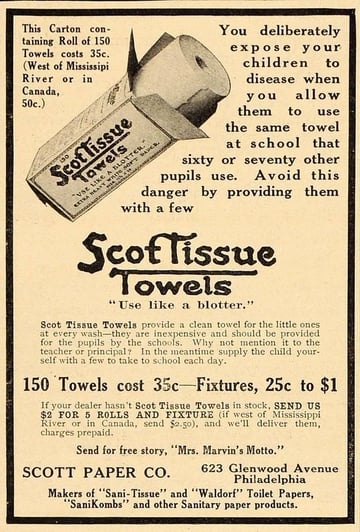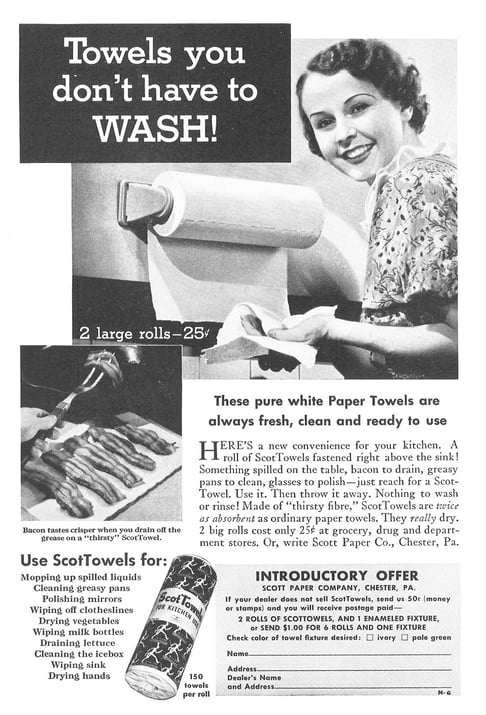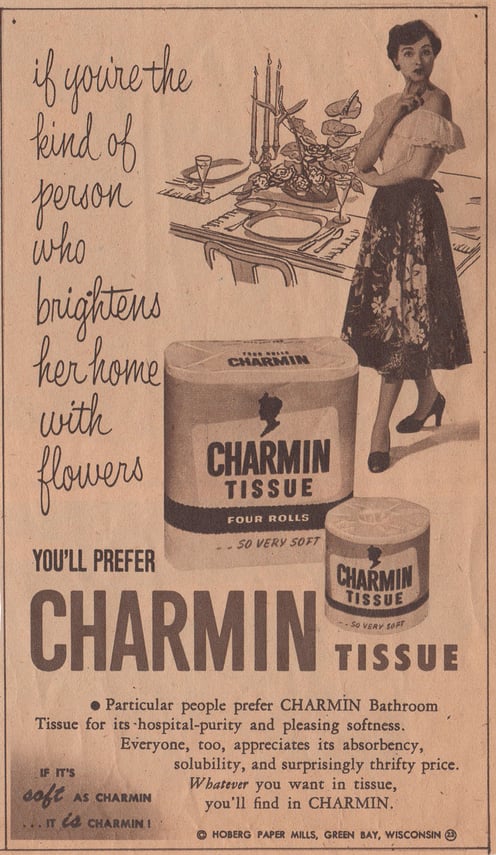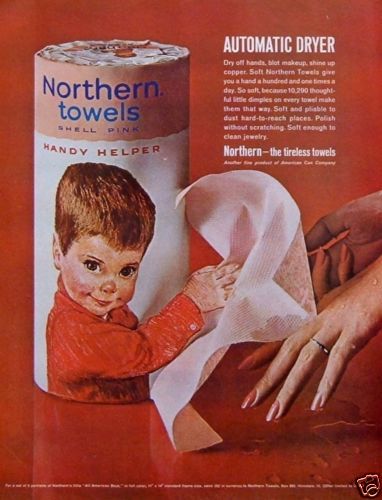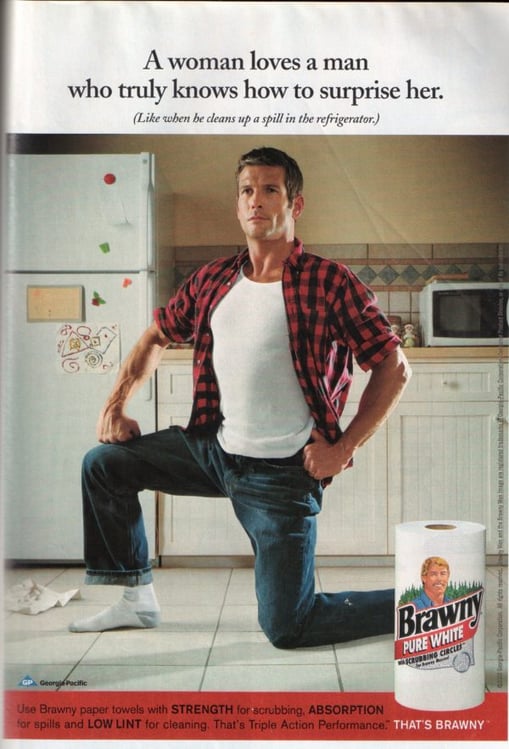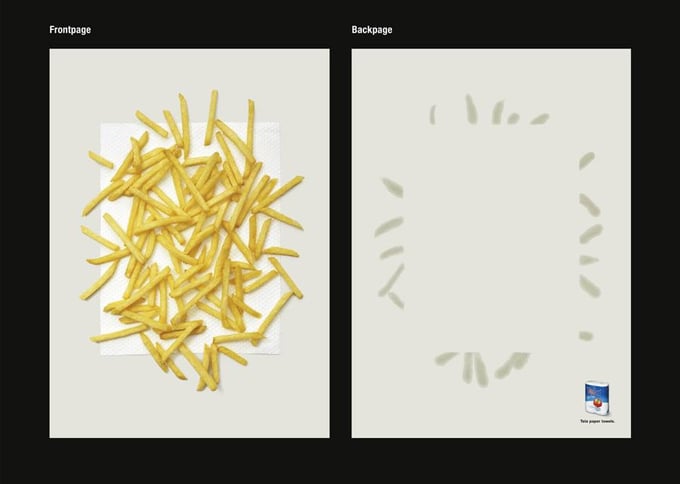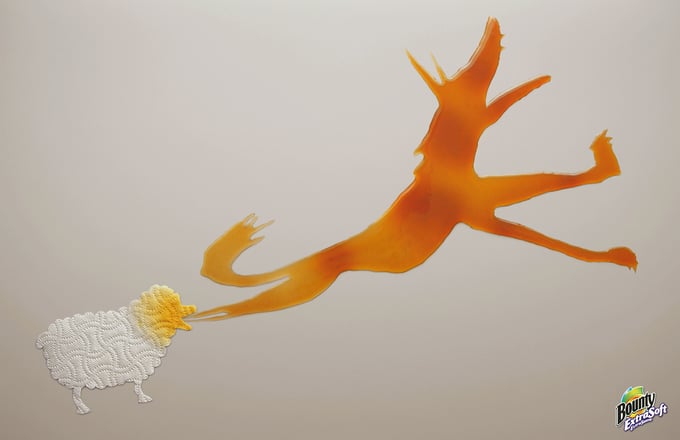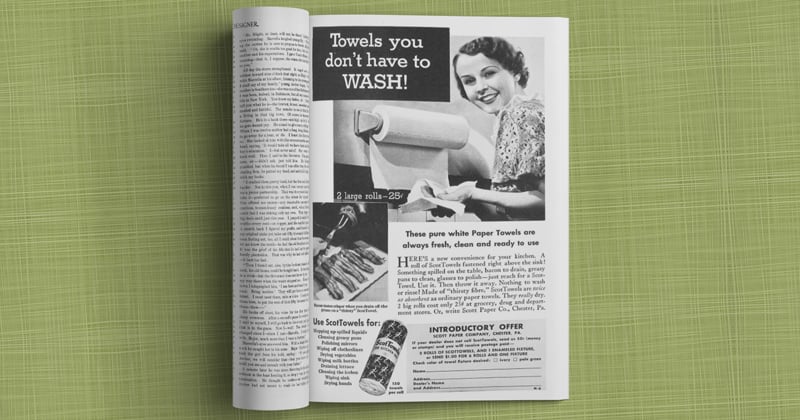
January 10 2018
Advertising is one of the most reliable indicators of the mood and taste of any given society. Let’s embark on a journey through the history of advertising for kitchen paper products to discover how we were and where we are today.
The history of kitchen towels begins at the dawn of the 20th century. Back then, fabric was the material used for almost everything. Hygienic mores were not, however, “modern” (so to speak) and rags or cloth towels were often used repeatedly and for a variety of uses before being washed: drying floors, cleaning hands, tables, pots and pans, wiping the mouth …
Thanks to the inventiveness of the Scott brothers, it became possible to produce absorbent paper for use in the kitchen. In the United States of the Roaring ‘20s, product communication was extremely referential and presented the product, its characteristics with little more than a hint of creativity in the copy.
Half-way through the ‘30s, the messages became increasingly elaborate and presented not only the product in use, but also the satisfaction of those who used it. Note the marketing-oriented advertising featuring a coupon to buy the product at a discount.
Even more sophisticated were the messages of the 1950s, in the case of Charmin showing a housewife who clearly keeps an impeccable home. In this case, too, the visual was divided into two sections: the top part more suggestive, lower down, more illustrative. The woman, far from working outside the home, was the queen of the house: a happy, contented queen because she keeps her kingdom clean.
With the advent of the Sixties came a new player in the game of influencing market choices – the child – as illustrated by Northern Towels’ campaign of the time. Children, too, participated in the moment of purchase, helping parents make choices and in some cases determining their preferences. The message focused on the modernity of the product by connecting the paper with the consumer through an hypothetical connection of hands between the illustrated child and real mother, with the point of contact being the absorbent paper.
In TV, the language of adverts slavishly borrowed its style from the theater and the movies. Bounty’s commercial in 1971 with Nancy Walker is a veritable mini-comedy show that shows the product in action and its advantages.
In the Italy of the 1960s, the “glass test” by Scottex proved highly popular. This renowned ad remains one of the very first examples of trade screenwriting developing a new language that abandoned the classic storytelling style. The commercial presented a product in a usage context bordering on exaggerated stress, and did so with a unique sequence shot from the viewer’s perspective.
Brawny is a name that wagered everything on surprise in advertising. We are straddling the 1980s and 1990s. Kitchen towels are advertised by a man who, embodying tough masculinity (jeans, checkered shirt and prominent jaw), is, however, a sign of his times and cleans the refrigerator with kitchen towels. On his knees in front of a woman off-screen, Mr. Brawny struck the feminine imagination that was beginning to recover an identity that was by now far removed from that of the impeccable homemaker. The scenario suggested is that Brawny – strong, tough and vaguely full-Monty-style – is at the service of the targeted woman.
With the turn of the century, creativity triumphed. The advertisement becomes the ideal canvas for unusual spatial arrangements, daring metaphors or references to the language of art.
We go from the essential quality of Canvas, to Bounty playing games with materials, to Toallin’s wow-factor.
A century of sales has caused an extraordinary revolution in production systems but at the same time – and no less importantly – a deep evolution in culture, language and advertising. Seeing these images and videos, we cannot help but ask ourselves what will be the most suitable language to communicate the benefits of paper tomorrow.
